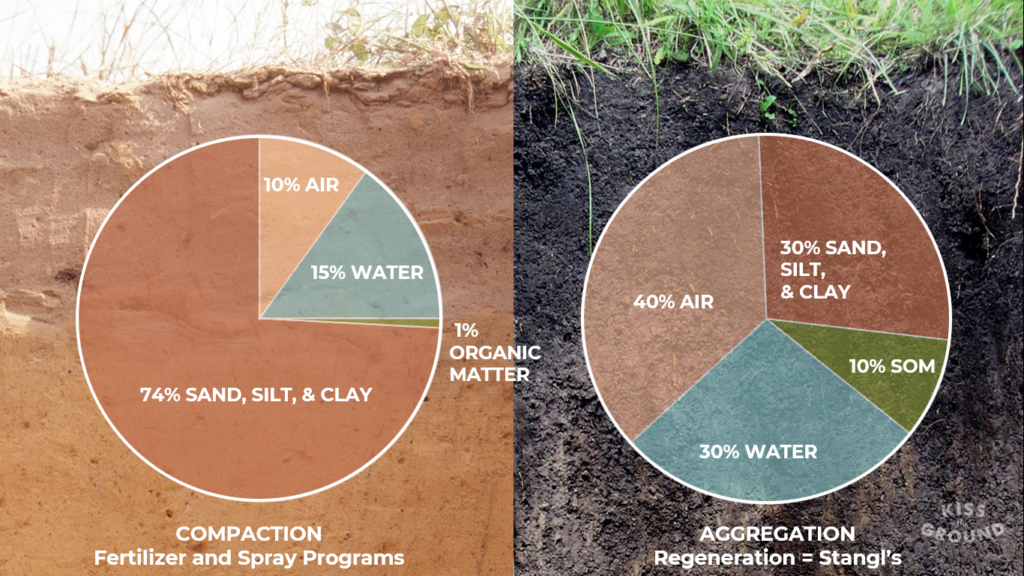In the realm of lawn care, a quiet revolution is unfolding – one that hinges on the intricate dance of soil microbes, organic matter, and water. Behind the scenes, numbers tell a compelling story of transformation, shedding light on the true impact of conventional practices and the promise of regenerative approaches.

Let’s start with the unsung heroes of the soil: bacteria. These tiny organisms wield immense power, driving nutrient cycling and soil health. Yet, their delicate balance is often disrupted by the application of synthetic fertilizers. For every pound of nitrogen (N) applied per 1000 square feet, a staggering five pounds of organic matter (OM) is lost. This loss not only depletes the soil’s carbon reserves but also disrupts the crucial carbon-to-nitrogen (C:N) ratio that bacteria rely on for growth and function.

But the repercussions extend beyond microbial health. As organic matter dwindles, so too does the soil’s ability to retain water. For every 1% increase in organic matter over an acre, water holding capacity swells by a staggering 27,000 gallons. With each fertilizer application, this vital reservoir is diminished, necessitating increased irrigation to compensate – a vicious cycle that strains water resources and exacerbates environmental challenges.
Moreover, the cascade of consequences doesn’t stop there. When rain or irrigation water cascades across compacted soil, laden with synthetic fertilizers, it becomes a potent carrier of pollution. These nutrient-rich runoff streams find their way into our waterways, fueling algal blooms and threatening aquatic ecosystems with toxic blue-green algae. Meanwhile, on compacted surfaces, synthetic fertilizers can release harmful gases, further compromising air and water quality.
Amidst these sobering statistics lies a glimmer of hope: the promise of regenerative lawn care. By harnessing the power of nature – from cover cropping and composting to holistic soil management – we can restore balance to the soil ecosystem and unlock its full potential. With regenerative practices, we not only nurture soil health and water retention but also safeguard the health of our communities and ecosystems.
The numbers don’t lie – regenerative lawn care isn’t just a buzzword; it’s a science-backed solution to the pressing environmental challenges we face. It’s time to embrace a new paradigm, one that prioritizes soil health, water conservation, and ecological resilience. Together, let’s reimagine the landscape and build a future where lawns thrive in harmony with nature.
